[ezcol_1half]
Tuesday night – Ellen of A Dot Hostel, Taipei, messages me. She’s off duty but knows we fly on Thursday, overnighting in Guangzhou to land at a doubtless rainswept Heathrow on Good Friday. How will we spend our last day in Taiwan? I tap out my reply: no plans.
“See the Steve McCurry Exhibition”, she zings back. It’s at the Moca Museum behind Zhongshan Metro, six stops on the Tamsui Line from A Dot. I hadn’t known, but am unsurprised. In October I’d posted on why export-led Taiwan has to punch above its weight in fashion, art and design.
[/ezcol_1half] [ezcol_1half_end] [/ezcol_1half_end]
[/ezcol_1half_end]
Unsurprised is not unthrilled though. Given my love of photography and travel – including the Afghanistan and Rajasthan of his most mesmerising images – McCurry’s subjects speak to me more directly, more fully and more durably than those of any other shutter artist, dead or alive.
They convey all that the grainy greyscales of his predecessors did. His Pashtun orphan, eyes of piercing green limpidity, confronts us no less forcefully – but no more so either – than Roger Mayne’s child, nursing with primal howl an elbow prang on Notting Hill’s Southam Street.
Mayne’s Notting Hill was a decade earlier and a shade to the north of Van Morrison’s Ladbroke Grove and chic Portobello. It’s the faded slumland1 of Christie and his hapless fall guy, Timothy Evans. It’s a landscape of drab austerity exploited by Perec ‘Peter’ Rachman, business associate of Michael X – bit of a gallows theme here – and sugar daddy to Keeler and Rice-Davies both.
(Did they do threesomes?)
It’s the West London section of a sullen, ticking time-bomb named white working class Britain, and of dark skinned men and women disembarked in pride, hope and Sunday finest at Tilbury Dock until the Commonwealth Immigrants Act of 1962 – dubbed “cruel and brutal anti-colour legislation” by and to the credit of Labour’s Hugh Gaitskell – danced to a tune called by the National Front. Four years earlier, Notting Hill’s race riots had blown clean out of the water the idea of some quintessentially British sense of fair play as, a few miles east, Bloomsbury Fabians either looked the other way or conceded that the masses weren’t yet ready for what it pleased them to call socialism.
Of course, neither Mayne’s nor any other contemporaneous photographs speak to us directly of these things. Even the most literally descriptive images – JFK’s assassination, say – can only be understood by drawing on context. Yes, that’s true of all documentation, included writings, but where the references and allusions, clarifications and elaborations, of written texts move freely across time and space, photographic records are fixed in the here and now – or there and then. That can confer explosively revelatory power, but also means they seldom if ever do the thing we continue naively – even in a digital age of endless manipulation and synthesis – to suppose they do. Photographs never ‘speak for themselves’.
[ezcol_1half]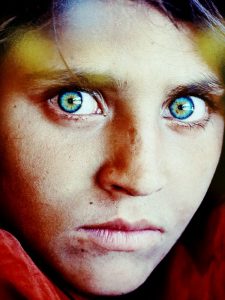 [/ezcol_1half] [ezcol_1half_end]To Afghan Girl – a National Geographic front cover and still, thirty-five years on, one of the world’s most famous photos – we attach (for no one ever comes to such an image free of preconceptions) horrors we can’t easily imagine.
[/ezcol_1half] [ezcol_1half_end]To Afghan Girl – a National Geographic front cover and still, thirty-five years on, one of the world’s most famous photos – we attach (for no one ever comes to such an image free of preconceptions) horrors we can’t easily imagine.
Just as well, that, when too much imagination can be worse than too little. Do we impose anachronistic2 and one-dimensional ideas of rigid theocracy and heroic defiance when, for all we know, we’re seeing the face of a minx holding back peals of scathing laughter?3[/ezcol_1half_end]
Likewise my girl in red, on a country road in Northern Ethiopia and offered not for comparison with Mayne or McCurry – I do have some sense of my limitations – but to make the point. Is she cross, or just struggling to contain, in a land where adult strangers may to this day command a small child to run some minor errand on their behalf, a mirth deeply disrespectful?
[ezcol_1half]Mayne’s child, unlike McCurry’s, is in the unambiguous grip of anguish all consuming. Another moment and her pain will be forgotten as she sails back into the game but this moment was caught on grains of silver halide, detained for decades on cellulose then transferred to virtual rivers of binary code.
The similarities matter more though. Both feature an elemental ‘thereness’. Both pull us in by their contrast with the pallidity of our own lives. Nobody told us the price of security would be vitality drained,4 but what if they had? Would we have walked away from the deal?[/ezcol_1half] [ezcol_1half_end]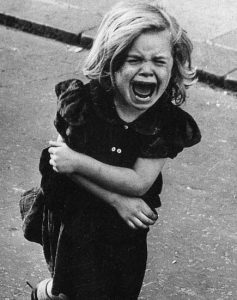 [/ezcol_1half_end]
[/ezcol_1half_end]
That’s a fair question: one McCurry’s photographs, like Mayne’s, never stop asking. It’s why we linger and why we return. It’s why I write this and why, the morning after Ellen’s messaging, I boarded the Tamsui Line for Zongshan and the Moca (Museum of Contemporary Art) …
(Jackie I left behind at A Dot Hostel, working on a chapter for a new book on – yawn – higher education pedagogy. Actually I do find that interesting but, you know, time and place and all. But Ellen, despite Wednesday being her day off, and despite having seen the Exhibition twice already, met me at Zongshan Metro.)
… it’s one of the reasons, anyway. Another being that in McCurry and Mayne we find in spades a unity of opposites all non trivial communications offer to greater or lesser degree: a dialectic of particular and universal; the world in a grain of sand. Who has not howled with pain over an injury sustained in the cut and thrust of childhood play? Ah, you say, but Afghan Girl’s situation is light years from our own. Yes, it is.
And no, it isn’t. Nothing in its particulars (or our feeble stabs at deciphering them) negates the greater truth that all human emotions are known intimately to each and every one of us. In 160 BC, give or take a decade, Terence told us that nothing human is alien to me. Which I take as meaning that, were I to slip into your skin and you mine, we’d feel nothing – neither the primary emotions nor their more nuanced derivatives and alloys – we didn’t instantly recognise.
Yes, if Afghan Girl wasn’t so far from our own experience she wouldn’t be quite as interesting, but neither would she be if so impossibly distant as to be unrecognisable in her humanity. In that case she’d engage, as an exotic specimen, a flickering interest soon spent. As it is though, Afghan Girl – like Mona Lisa5 – haunts us in ways that make us return again and again to the blazing intensity of those eyes …
… their hue a paleontological story in its own right – who are the Afghans? – and one that those earlier greats – Roger Mayne, Bill Brandt and, only slightly differently, Jane Bown – could never have told due to the constraints of black and white film. Which brings us, before I finally STFU and get to those gorgeous images, to another quality that leaps out of Steve McCurry’s work: its sheer sumptuosity of colour.
[ezcol_1half]Ellen met me at Zongshan Exit 6, as arranged. We had breakfast – she doing the ordering – round the corner from the former elementary school now housing the Moca, then entered: in her case FoC given the season ticket she flashed; in mine to the daylight robbery of forty-five Taiwanese dollars at forty-one point three seven to the pound.
One last thing, before I let the images do the talking. This exhibition is a work of art in its own right: full of imaginative touches, like McCurry’s most famous images projected onto a rippling wall of smoke, or split by the fronds of room dividers, or using mirror and video to place viewer inside image in ways that blur the subject-object divide … [/ezcol_1half] [ezcol_1half_end]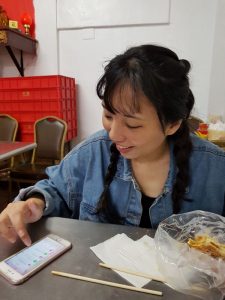 [/ezcol_1half_end]
[/ezcol_1half_end]
… these things in addition to, not as clever-clever substitution for, more traditional displays of McCurry’s work in framed and king sized resplendence. At foot of a flight of stairs dominated by a print – four metres high if its an inch – of that immortalised gathering of Rajasthani women shrouded in dawn mist, a talking head video has McCurry himself heaping praise on the young man, well known in Taiwan but not elsewhere, who’d put it all together.
No quarrel here. This is quite the best photographic exhibition I’ve seen. And I’ve seen a few.
Alas, I can’t say the same of these images, snapped on a Galaxy S7 and, though I did what I could, not always free of the glare of overhead spotlights nor awkward angles reduced but not eliminated.6 Apologies in advance.
That’s Thailand, btw, but while we’re on the subject of animals, one casualty of the first gulf war was Kuwait Zoo. Its fences took such a hit the animals fled, to find what sanctuary they could.
As Michael Caine would say, not a lot of people know that. But we do.
* * *
- Mayne wanted to exhibit his Southam Street work, captured on a Zeiss Super Ikonta rather than the Leica favoured by ‘art’ photographers since Cartier Bresson, at the V & A. Its curator wrote back that his museum housed works of art, not the products of mindlessly mechanistic processes.
- This being 1984, with the USSR yet to fall and the Taliban yet to rise.
- As it happens she was angry with McCurry, but we can’t (validly!) deduce that from the image alone. That’s important. One of the ways our emotions are manipulated to serve powerful agendas is through an ambiguity at the heart of every photographic image. Roland Barthes, in one of a set of seminal essays, wrote of the camera as mythology, its potential to mislead seeded in that pairing, to a degree unique to this medium, of denotation and connotation.
- As a young man I once sat in the maze of Old Delhi Station, watching street urchins at play. The unalloyed joy of kids who knew neither parents nor home, nor when they’d next eat – kids fully in the Now as they darted through, between and under the rolling stock and steam engines parked up in that Gormenghast of permanent gloom – stood in stark contrast to the shut down, spoiled (not to be confused with pampered) and switched off faces of their western counterparts. Given even then to musing on the Nature Of Things – why else would a twenty year old trek thousands of miles across Europe and Asia to the hippie Mecca of existential inquiry? – it was an early intimation of a truth I’ve never had cause to doubt: we can have safety, or live life to the full, but not both.
- I’m of the view that few photographs compete with paintings in ability to fascinate us long term. That’s certainly the case with landscapes but the best portraits really do come close to giving the Leonardos and Caravaggios a run for their money.
- Actually I missed one trick, and an important one at that. Samsung’s S7 Edge allows for shooting Raw files. Had I used it I could have gone a long way to correcting angles – on prints too high to shoot eye to eye – in Lightroom.

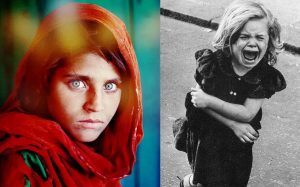
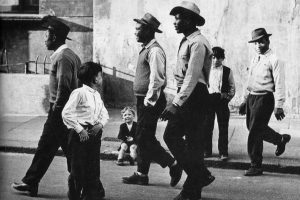
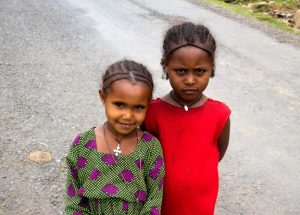
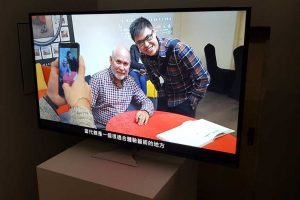
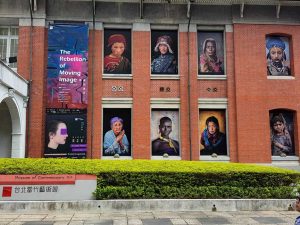
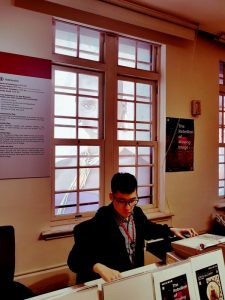

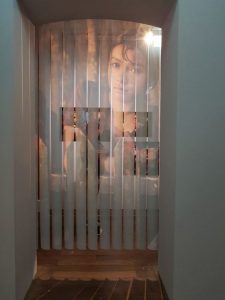
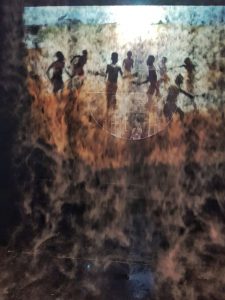
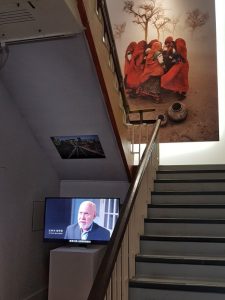
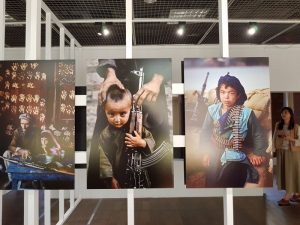
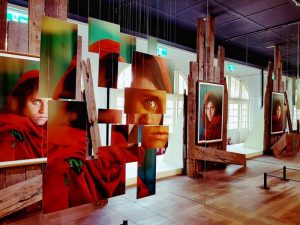
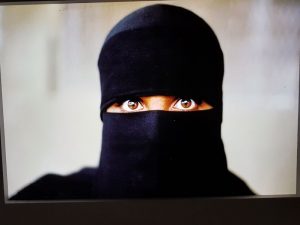
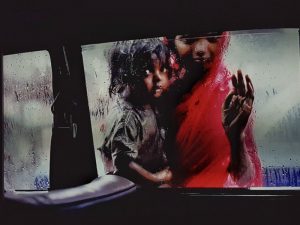
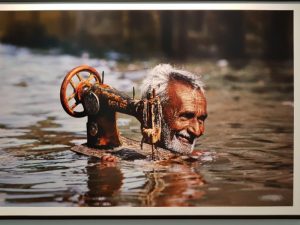
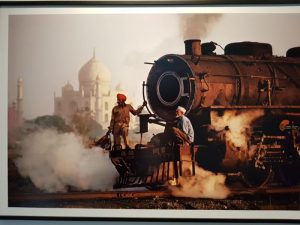
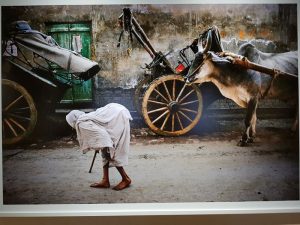
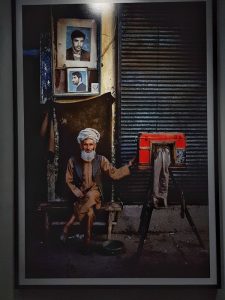
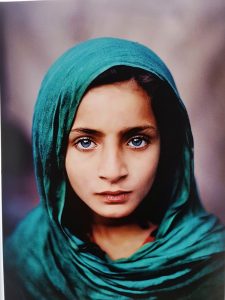
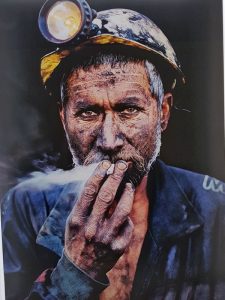
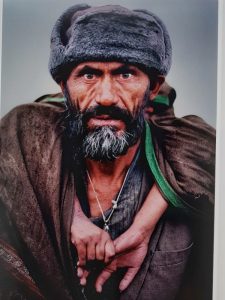
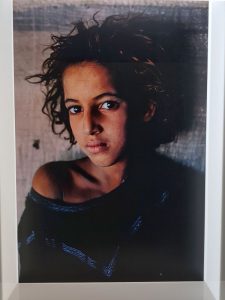
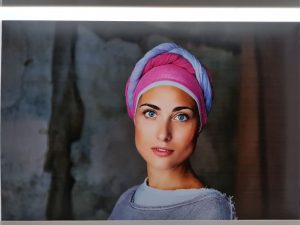

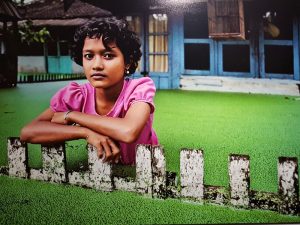
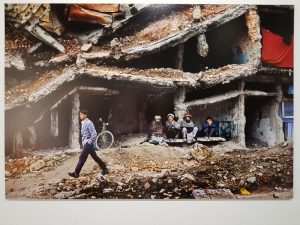
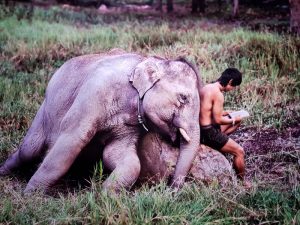
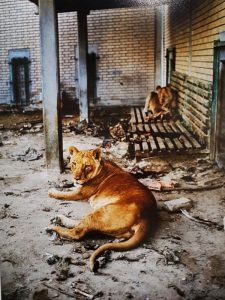
I knew I’d seen something about Steve McCurry recently. View this:
https://www.nationalgeographic.com/magazine/2002/04/afghan-girl-revealed/
Keep up Jackie! That’s linked from my footnote 3. I linked despite, not because of, the one-sided swipe at what the USSR was up to in Afghanistan. (Echoes of the frightening, infuriating and deeply worrying demonisation of Putin – and Assad – and ludicrous wall-to-wall media depictions of a West driven by humanitarian concern.)
National Geographic is legendary for the quality of its images. Word has it that, on seeing Afghan Girl on a strip of contact prints, the picture editor leapt electrified from his seat – “that’s our next front cover!”
But that doesn’t mean NG is free of the intelligence insulting garbage sprayed out by all corporate media when it comes to the “developing world”. I’m interested in its factual reporting that (a) the girl resented McCurry’s lens (Q4 screeds of liberal tut-tuttery*), (b) years later she was located and a meeting engineered with her soul stealer (I’m as big a sucker as the next guy for such ‘human interest’ stories) and (c) time had withered her looks but not that incandescent gaze. As for the rest, National Geographic can stick its kindergarten analyses where the sun never shines.
* Don’t get me wrong. As traveller and photographer both I’m sensitive – have to be given the places I visit – to questions of appropriate and respectful behaviour. But I’d take those liberal deprecations – IMO analogous to middle class feminists’ overegging of sexism in grammar while their poorer sisters are shafted the world over to make the stuff they no less blithely than I consume – more seriously if accompanied by action over the West’s’ exploitation of and ‘humanitarian’ wars on the imperialised world.
Even my untutored eye can appreciate those beautiful portraits, however my views on Putin and Assad are totally different from those in your comment.
Most people’s are. But then, where do they get their ‘information’ on Assad and Putin?
One only has to witness the maiming, dseaths, destruction and mass emigration as seen on TV, to be aware of the evil in that country, allat the hands of those two dictators,
The last part of your comment is a logical non sequitur. No one disputes, certainly not me, that Syria’s been turned into a hell on earth. At issue is who is responsible and what their motives are. I’ve gone into these things in many posts. If you want to engage me on their specifics I’ll be happy to reciprocate.
I like all of the photos
Thank you!